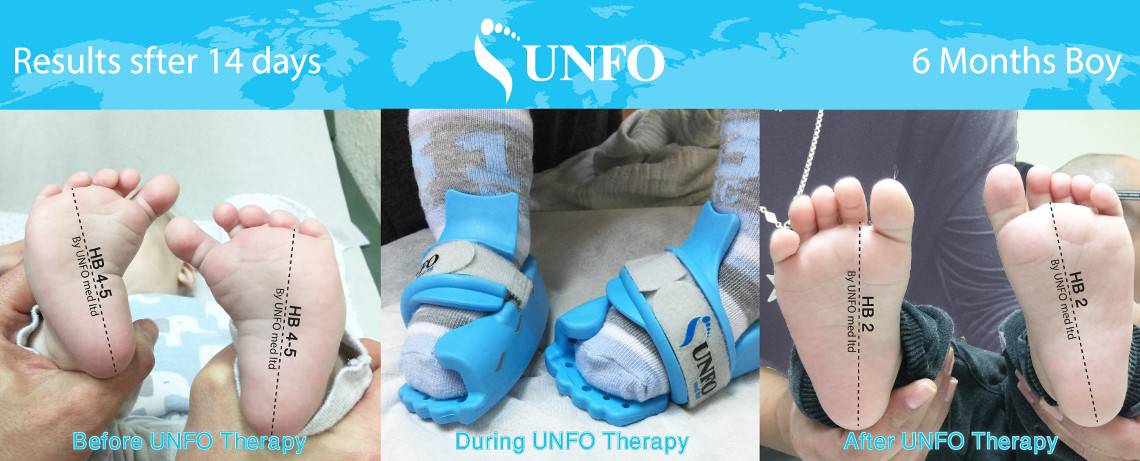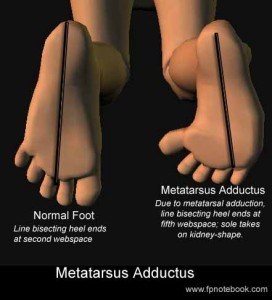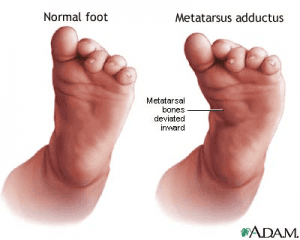
Congenital Foot Deformations
Metatarsus Adductus
Metatarsus Adductus – also known as Metatarsus Varus or MTA – is a congenital foot deformity that occurs in approximately 7% of births. When one sibling has a deformity, the incidence increases to 12%.
This deformity causes the front half of the foot to turn inward due to an off-center deviation at the tarsometatarsal joints (the midfoot, or middle part of the foot).
While the cause of this condition is unknown, the fetus’ position while in the uterus plus family history is known to be contributing factors.

Treatment Options for Metatarsus Adductus
The goal of treatment is to straighten the forefoot and the heel through stretching, casts and surgery.
There are several clinical factors to consider when determining if treatment should begin with Metatarsus Adductus patients. These factors include:
- The natural history of the deformity including the likelihood of it persisting without treatment
- Potential compensations for the adducted forefoot when the condition persists
- Significance of residual deformity as the child becomes an adult
- The reported increased incidence of deformity in the presence of underlying Metatarsus Adductus.

Club Foot (Talipes Equino Varus)
Club Foot (also called clubfoot or talipes equino varus) is a congenital deformity where one or both feet appear to rotate internally at the ankle. This makes walking extremely difficult, and corrective orthotic treatments can help prevent the need for surgery. Club foot occurs in approximately 0.1-0.3 percent of live births, and it may be more or less common depending on ethnicity. In the Polynesian Islands, about 7.5 percent of babies are born with clubfoot.
Treatment of Club Foot
As clubfoot is more severe than metatarsus adductus, more aggressive treatment may be necessary. During the past few decades, conservative casting and strapping treatment of club foot have been shown to be an excellent option for long-term results with minimally-invasive intervention. UNFO has developed – and will soon be releasing – a sophisticated new foot device to correct clubfoot in newborns.


